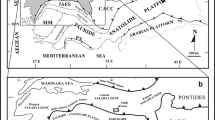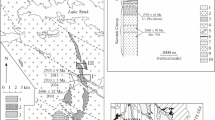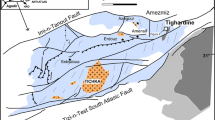Abstract
Three main types of recent volcanism may be distinguished in the Afar Depression: 1) oceanic volcanism of the axial ranges; 2) volcanism along the margins where an attenuated sialic crust probably occurs; 3) mainly fissural volcanism of Central-Southern Afar, with associated central volcanoes, similar as a whole to the volcanism of the Ethiopian Rift Valley.
Peralkaline silicic volcanic rocks are found in all the three groups but showing some different characteristics which seem related to their geological location and which probably reflect different sources. Moreover emplacement of peralkaline granitic bodies, associated with volcanics of the same composition, marks the first stage of formation of the Afar Depression, in the Early Miocene.
Axial Ranges: Erta’Ale and Boina volcanic ranges indicate that peralkaline rocks are the final liquids produced by fractionation of basalt in shallow magma chambers of central volcanoes. The parental magma is a transitional type of basalt with a mildly alkalic affinity, which fractionated under lowpH2O-pO2 conditions.
Transition to peralkaline liquids is realized without passing a «true» trachytic (low silica) stage. The first peralkaline liquid is a low silica comendite and evidence exists that «plagioclase effect» was active in determining the first peralkalinity. Within the peralkaline field a fractionation mainly controlled by alkali feldspar progressively increases the peralkalinity and silica oversaturation of residual liquids (transition from comendites to pantellerites). The most peralkaline pantellerites of Boina are produced by fractionation of an alkali feldspar of constant composition (Ab65–68 Or35–32) suggesting that these liquids lie on a «low temperature zone» of the peralkaline oversaturated system.
Marginal Units: On the borders of the depression peralkaline silicics are found in volcanic massifs mainly made of metaluminous silicic products. Petrology and geochemistry suggest a complex origin. Crystal fractionation, contamination with sialic crust and chemical changes related to a volatile rich phase, all these processes probably played a role in the genesis of these peralkaline silicic rocks.
Central-Southern Afar Fissural Volcanism: Mildly alkaline basalts are associated with peralkaline and metaluminous silicics; intermediate rocks are very scanty. Fractionation from deep seated magmatic bodies with selective eruptivity and partial melting at depth of associated basalts or of a common source material are possible genetic mechanisms.
Similar content being viewed by others
Author information
Authors and Affiliations
Rights and permissions
About this article
Cite this article
Barberi, F., Santacroce, R. & Varet, J. Silicic peralkaline volcanic rocks of the afar depression (Ethiopia). Bull Volcanol 38, 755–790 (1974). https://doi.org/10.1007/BF02596907
Received:
Issue Date:
DOI: https://doi.org/10.1007/BF02596907




